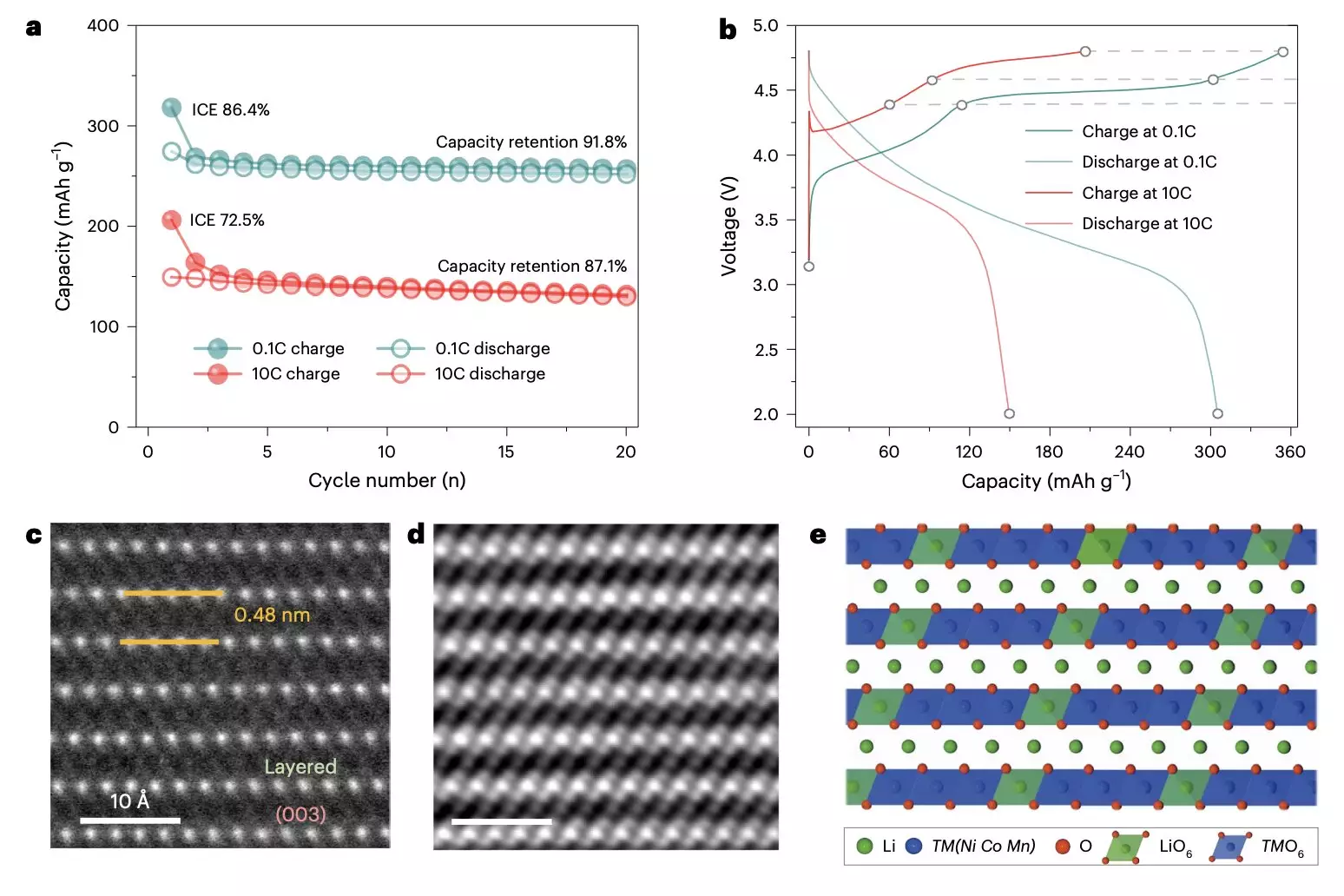As technological innovation races ahead, the demand for improved energy storage solutions has intensified, particularly with the rise of electric vehicles and portable electronic devices. In exploring new and advanced battery technologies, researchers have focused their efforts on improving various key aspects of batteries, such as energy density, charging speed, and longevity. A significant area of interest has been the development and analysis of cathode materials, which are crucial for determining overall battery performance. This article delves into the challenges and opportunities presented by layered lithium-rich transition metal oxides, which have emerged as a focal point in the ongoing quest for better battery technologies.
The Promise of Layered Structures
Layered lithium-rich transition metal oxides have shown great promise in enhancing the energy density of rechargeable batteries. The unique structural properties of these materials allow for effective lithium ion movement, which is essential for enhancing charge and discharge cycles. The combination of transition metals such as manganese, cobalt, and nickel with oxygen results in a rich compound that facilitates vital redox reactions, allowing for efficient energy storage and release. However, despite their potential, the practical application of these materials has been hindered by notable performance degradation over time.
One of the primary concerns surrounding layered lithium-rich metal oxide cathodes is their rapid deterioration, which leads to a significant loss in voltage and overall efficiency with repeated use. Recent research conducted by a collaboration of scientists from Sichuan University, Southern University of Science and Technology in China, and other global institutions has aimed to illuminate the complex pathways underlying this degradation. The researchers have published findings in *Nature Nanotechnology*, highlighting the various structural, chemical, kinetic, and thermodynamic effects that contribute to the impaired longevity of these cathodes.
They employed sophisticated imaging techniques, including energy-resolved transmission X-ray microscopy (TXM), to conduct detailed analyses at both the nanoscale and microscale levels. This allowed the research team to uncover the intricate mechanisms involved in the ongoing degradation of cathodes throughout their charge cycles.
The studies revealed an assortment of oxygen defects that emerge during the initial charge cycle, which accelerates degradation through multiple pathways. When charged too quickly, these lithium-rich metal oxides undergo considerable structural transformations that produce nanovoids and result in irregular lattice displacement, transitioning metal ion dissolution, and fluctuations in lithium locations. Such structural inhomogeneities lead to diminished initial Coulombic efficiency, as well as subsequent cracking and expansion of the material, ultimately compromising the battery’s operational capacity.
The work of Liu, Zeng, and their colleagues has shed significant light on how the interplay of various factors contributes to the degradation phenomena observed in these cathodes. The understanding of these aspects is crucial for developing enhanced battery designs capable of mitigating such challenges, thereby improving performance longevity.
The findings from this recent study represent just the beginning of a comprehensive exploration into the properties and behaviors of layered lithium-rich transition metal oxides. The identification of specific degradation pathways paves the way for the possibility of engineering solutions that can enhance the stability and extend the lifespan of batteries utilizing these materials. This research not only opens avenues for future investigations but also lays the groundwork for developing innovative strategies that can be adapted for large-scale battery application.
As industries continue to push for advancements in energy storage technologies, such insights will be instrumental in guiding researchers and engineers toward creating more efficient, durable, and sustainable batteries. The road ahead is promising, and with ongoing commitment to understanding the intricacies of battery systems, we may soon see a new generation of energy storage solutions that meet the demands of our ever-evolving technological landscape.


Leave a Reply